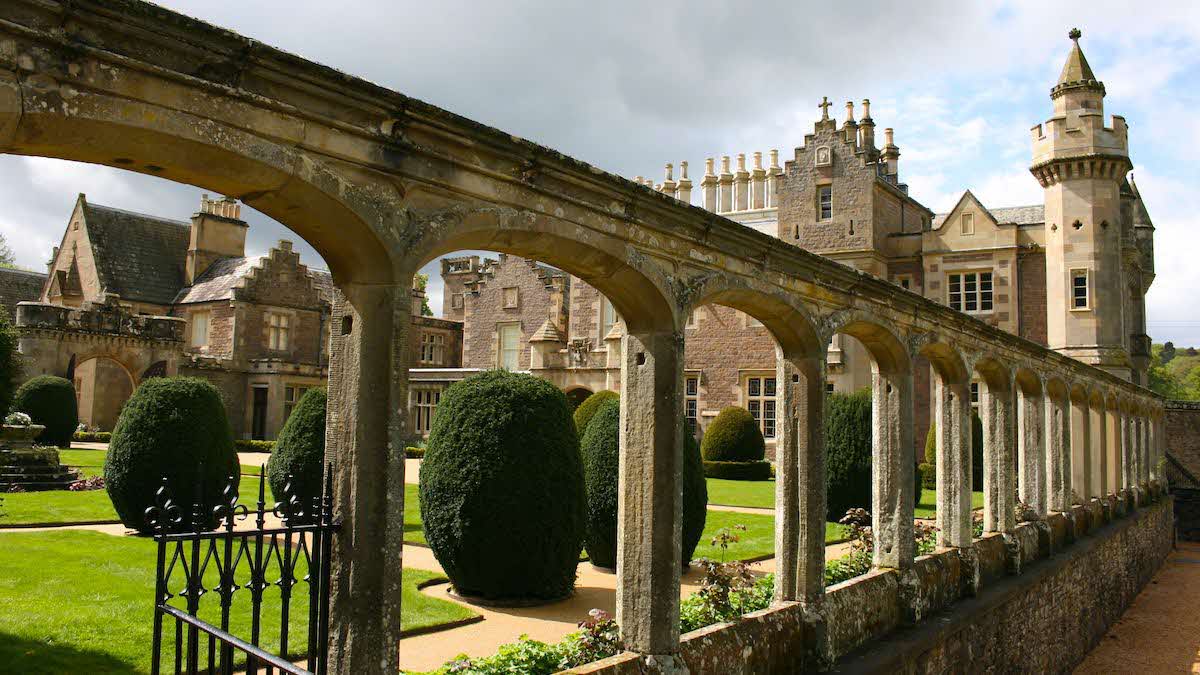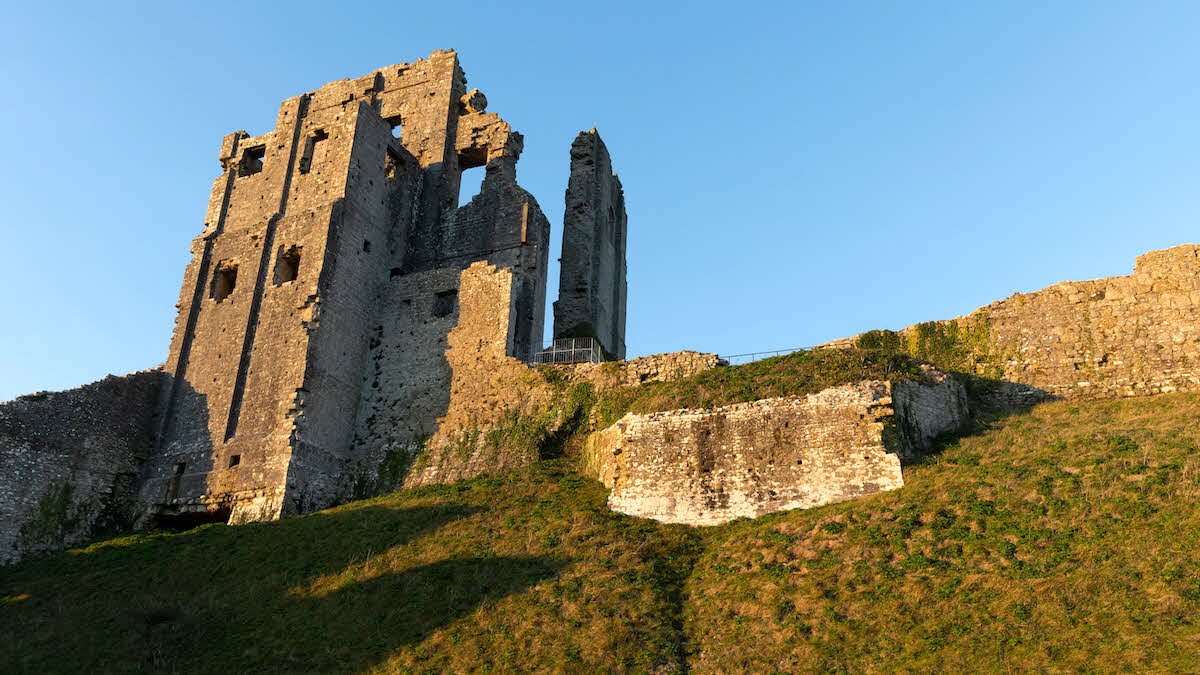Book a Club campsite
Explore hundreds of Club campsites and plan for stays throughout the year. There are plenty of locations to choose from, search and book today.
Book nowThere are scores of fascinating historical buildings within easy reach of Club campsites across the UK – pots of tea and buttered scones non-negotiable…
Mystical ruins, moated castles, iconic industrial landmarks and grand estates – history-loving Club members are spoiled for choice when staying on our campsites. Join us now on a 10-stop journey into the past.
 Photo © Eric Ness
Photo © Eric Ness
Starting in the Scottish Borders, Melrose Gibson Park Club Campsite is only an hour or so’s drive from Edinburgh and its wealth of historic attractions, including the iconic castle and Palace of Holyrood House. However, closer by (about three miles away) is Abbotsford, the opulent former home of eminent author and poet Sir Walter Scott, which he described as “a sort of romance in architecture”. The house has been kept as it was left upon Scott’s death, and visitors can enter his private study and library for an insight into his life as a successful writer.
Heading south into County Durham, White Water Park Club Campsite is just seven miles from the Grade I-listed Georgian mansion, Ormesby Hall. Once home to the wealthy Pennyman family, this National Trust property charts 400 years of history, including the lives of influential residents such as ‘wicked’ Sir James. Modified by different generations, the house offers fine examples of neoclassical ceilings and Victorian kitchens, as well as a model railway and 240 acres of garden to explore.
About 160 miles south, on the Lincolnshire coast, Sutton-on-Sea Club Campsite is handy for the stunning brick-red Victorian country house at the National Trust’s Gunby Estate, just a few miles inland. The listed 42-room Gunby Hall is the highlight, built in 1700 with further alterations throughout the 19th century. Lord Tennyson, who grew up nearby, referred to the house as “a haunt of ancient peace”. The large Victorian gardens feature many varieties of roses, pears and apples, plus a croquet pitch and 17th-century dove cote.
Venturing into the East Midlands, The Firs Club Campsite is an ideal base from which to visit the D H Lawrence Birthplace Museum, situated in the very house where Nottingham’s famous – and controversial – novelist lived until the age of 23. The museum showcases the Lawrence family’s working class roots in the former mining town of Eastwood, the tour taking you through the rooms as they would have originally been presented. The Blue Line Trail through Eastwood explores other sites of interest related to the family.
 Corfe Castle © National Trust Images/Barbara Evripidou
Corfe Castle © National Trust Images/Barbara Evripidou
We now travel roughly 200 miles south to Kent, where Bearsted Club Campsite is a popular base for days out at the fairytale Leeds Castle, which welcomes over 600,000 visitors a year. Dating back to 857AD, the castle sits astride two islands, surrounded by a moat, and has been, variously, a Saxon manor, a Norman stronghold, a Royal residence and a palace; most famously, Henry VIII turned it into a home for Catherine of Aragon.
Heading west, we reach Dorset. Hunter’s Moon Club Campsite is a short drive from the ruins of Corfe Castle, which was built shortly after the Norman Conquest of 1066 and was a key stronghold for William the Conqueror. The castle came under siege during the English Civil War, its owners at the time (the Bankes family) being supporters of King Charles I. It was subsequently blown up with gunpowder, hence the unusual silhouette of the ruins. Today, you can explore the castle with an optional audio guide, and admire the surrounding scenery and abundant wildlife, including birds of prey.
Heading into the far west of England, we reach another ruined castle: Tintagel. Sitting above a cove on the north Cornish coast, Tintagel, which is within easy reach of Trewethett Farm and Camelford Club campsites, is a must-see for visitors to this part of the country. According to legend, King Arthur was conceived here, which inspired the building of the castle in the 1230s. While exploring the ruins, it is impossible not to be impressed by the beautiful headland on which they sit. On the beach below, you can explore Merlin’s Cave at low tide, while Tintagel village offers refreshments aplenty, including a popular Cornish pasty shop.
From Cornwall, we head north into Wales, and Pandy Club Campsite on the edge of the Bannau Brycheiniog (Brecon Beacons) National Park. It is just a 30-minute drive to Cornwall House, a hidden gem in the heart of Monmouth. This striking townhouse dates back to the 17th century, its façade later being remodelled in the Georgian style. The original 18th-century walled kitchen garden is intact, while the house features a stunning staircase. Visits are by appointment only so please see visitmonmouthshire.com and search for ’Cornwall House’ in advance. (Admission is free to Members of Historic Houses.)
 Photo ©The Piece Hall
Photo ©The Piece Hall
Back in central England, Warwick Racecourse Club Campsite is just a short walk away from imposing Warwick Castle – built by William the Conqueror, and now a popular visitor attraction – and you can also drive to Kenilworth Castle, which is managed by English Heritage. Once an imposing medieval fortress, Kenilworth was later converted into a lavish Elizabethan palace by Robert Dudley. Today visitors can explore the ruins, as well as the grounds and delightful gardens.
Our final stop is back in northern England at Hebden Bridge Club Campsite, nestled in the Calder Valley. From here, it is a short hop to the Grade I-listed Piece Hall, which dominates the centre of Halifax (seven miles by road or just a few minutes by train from Mytholmroyd Station). Enclosing an impressive quadrangle, this remarkable piece of architecture was constructed in the late 18th century as a trading place for cloth merchants, and is now the only remaining example of such a building in the UK.
Today, you can walk in the footsteps of the merchants and explore its wide range of boutiques and eateries; it’s an atmospheric venue for live music events in summer.
We hope you have enjoyed this briefest of history lessons – we’d love to hear about more of the cultural attractions you have visited near Club campsites.
 Glamis Castle
Glamis Castle
If we’ve whetted your appetite for heritage-themed travel, here are more Club campsites you might like to add to your itinerary.
Forfar Lochside Club Campsite, Angus
This picturesque Club site is near Glamis Castle, childhood home of Queen Elizabeth The Queen Mother. You could also visit 12th-century Arbroath Abbey.
Englethwaite Hall Club Campsite, Cumbria
This Cumbrian campsite is just 10 miles from the grand country house of Dalemain, which boasts a significant collection of fine art, furniture and ceramics. It also hosts the World Marmalade Awards!
Lady Margaret's Park Club Campsite, Wrexham
This wooded site adjoins the grounds of 13th-century Chirk Castle. Today, visitors can explore the building, plus the manicured gardens and parkland.
Commons Wood Club Campsite, Hertfordshire
Head to Knebworth House, famous for its music events. As well as the house itself, visitors can enjoy beautiful gardens and parkland.
Longleat Club Campsite, Wiltshire
Pitches are a brief walk away from the Elizabethan stately home and safari park of the same name. You can take a guided tour of the house and explore the gardens designed by ‘Capability’ Brown.
Teesdale Barnard Castle Club Campsite, County Durham
Barnard Castle itself is just a 20-minute walk from this campsite. Built in the 12th century, today visitors can explore its ruins and enjoy views out over the Tees Gorge.